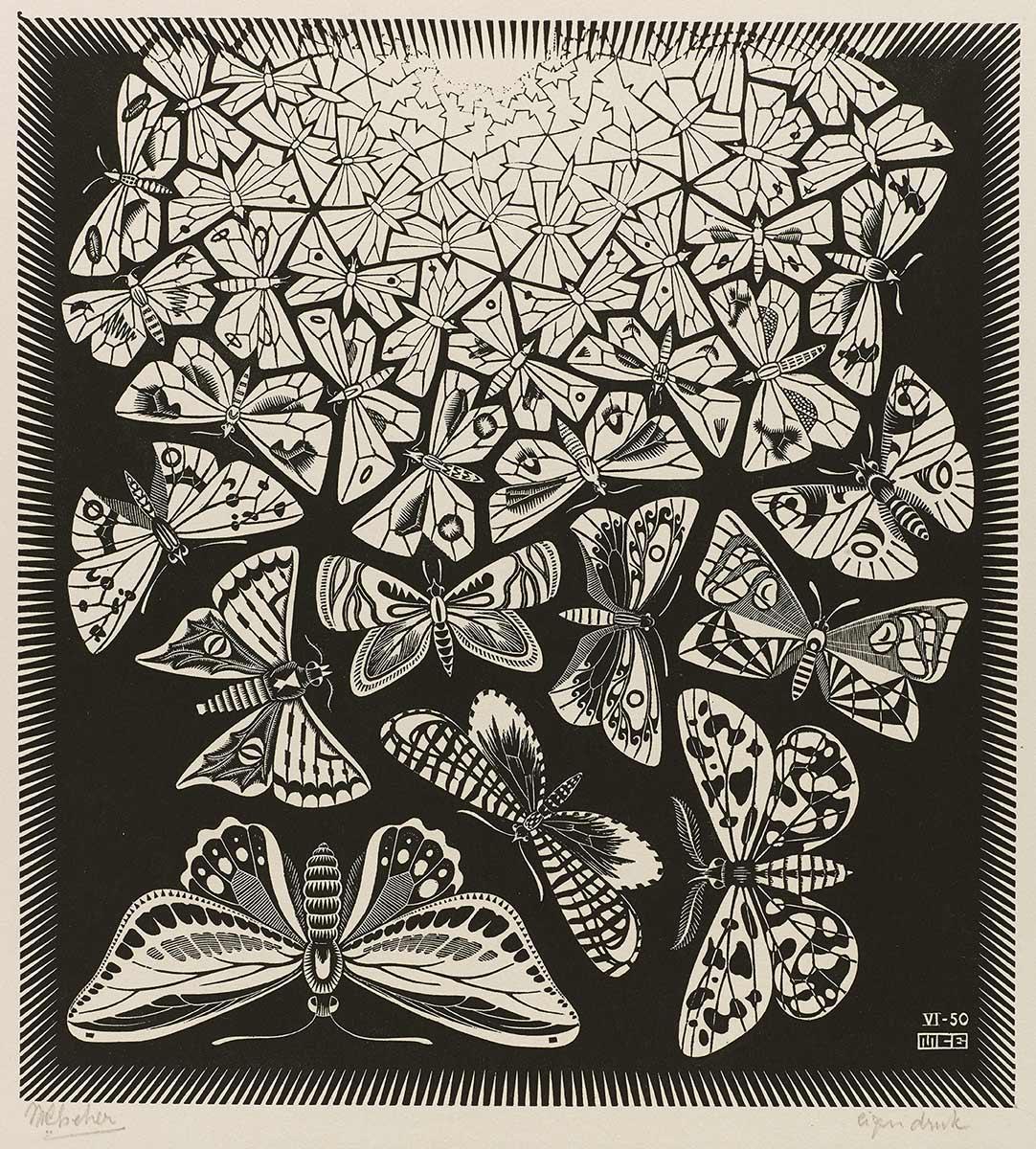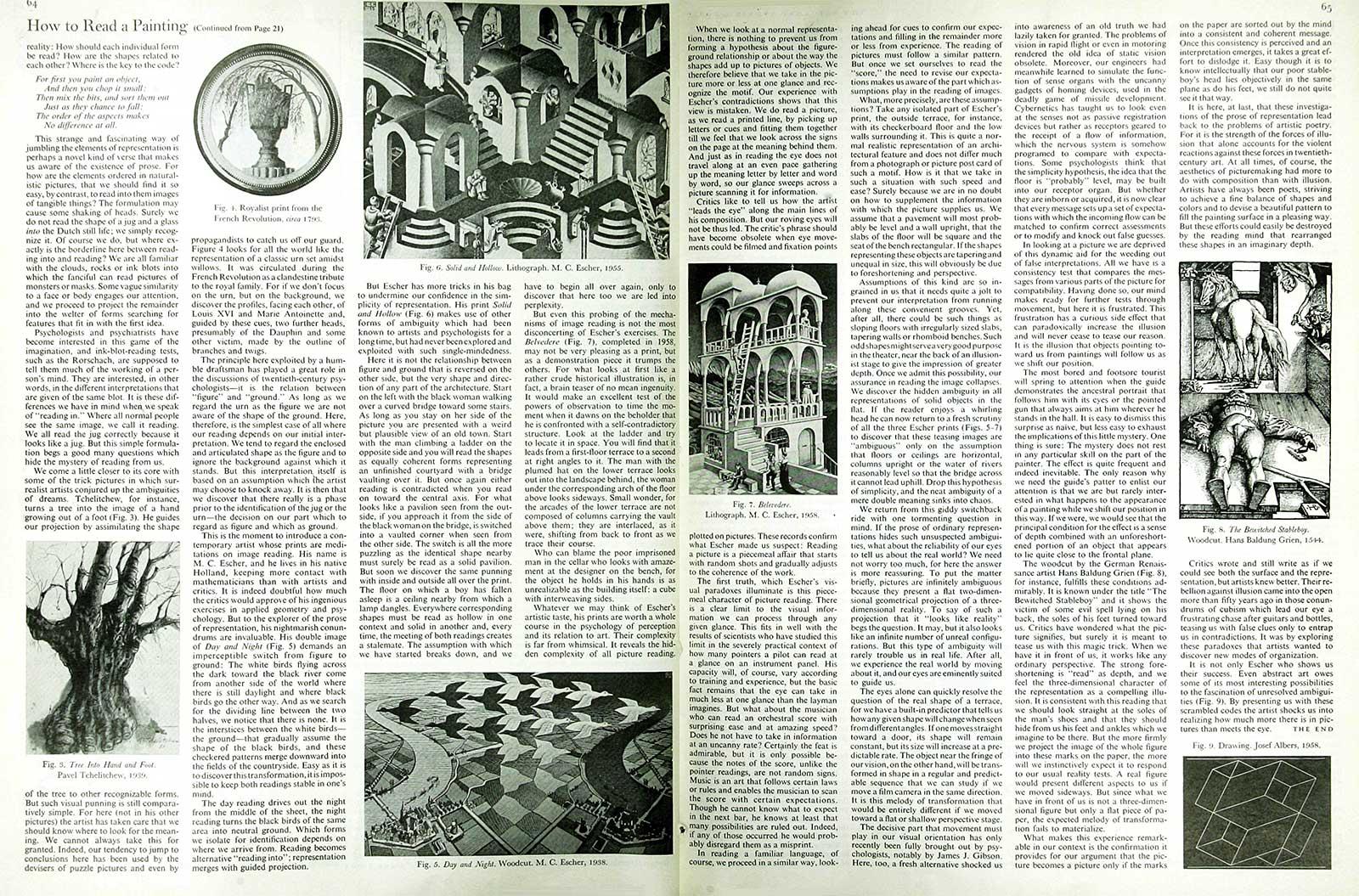

One of the most wondrous prints by M.C. Escher is (Two) Doric Columns, a wood engraving in three colours that he created in August 1945, just after the liberation. After Balcony, it was the second new print that Escher produced following the euphoric days in May that year.

Like Balcony and Three Spheres I, which he created a month later, this print is an early example of one of Escher’s main themes: the illusion of spatiality on a flat surface. He plays with the automatism with which our brains interpret an object — provided with shadows, shadings, fading lines and other perspectival tricks — as three-dimensional. In this case, these objects are two Greek columns. He enhances the three-dimensionality even more by situating them in a room with a floor, ceiling, rear and side walls. A space that is not there either, but that we visualise as such. He then carefully breaks down the illusion of three-dimensionality by ‘rolling up’ the columns, as if they are not made of solid natural stone but paper. The space they are in is too small, so he has to do this. In the case of the left column, this rolling up movement takes place from above, and in the case of the right column from below. The moment when it happens is marked by a fold. A fold whose visibility perfectly illustrates the difficulty our eyes have in properly interpreting this representation. Escher hides the ends of the paper under the left and above the right column. The two pillars thus hold each other captive, in an eternal balance.
Escher himself describes it like this *:
'The lower part of the left-hand column suggests a heavy three-dimensional stone object, and yet it is nothing more than a bit of ink on a piece of paper. So it turns out to be a flat strip of paper which, having been folded three times, has got itself jammed between the ceiling and the capital of the right column. But the same thing applies to the right-hand column itself; from above it appears voluminous, but from below it turns out to be a ribbon lying flat on the floor with the left-hand column resting upon it.'
(Two) Doric Columns is an ostensibly simple print. In all its simplicity, however, it is one of the finest examples of the way in which Escher manages to combine an unparalleled mastery of his craft with his fascination for illusions.
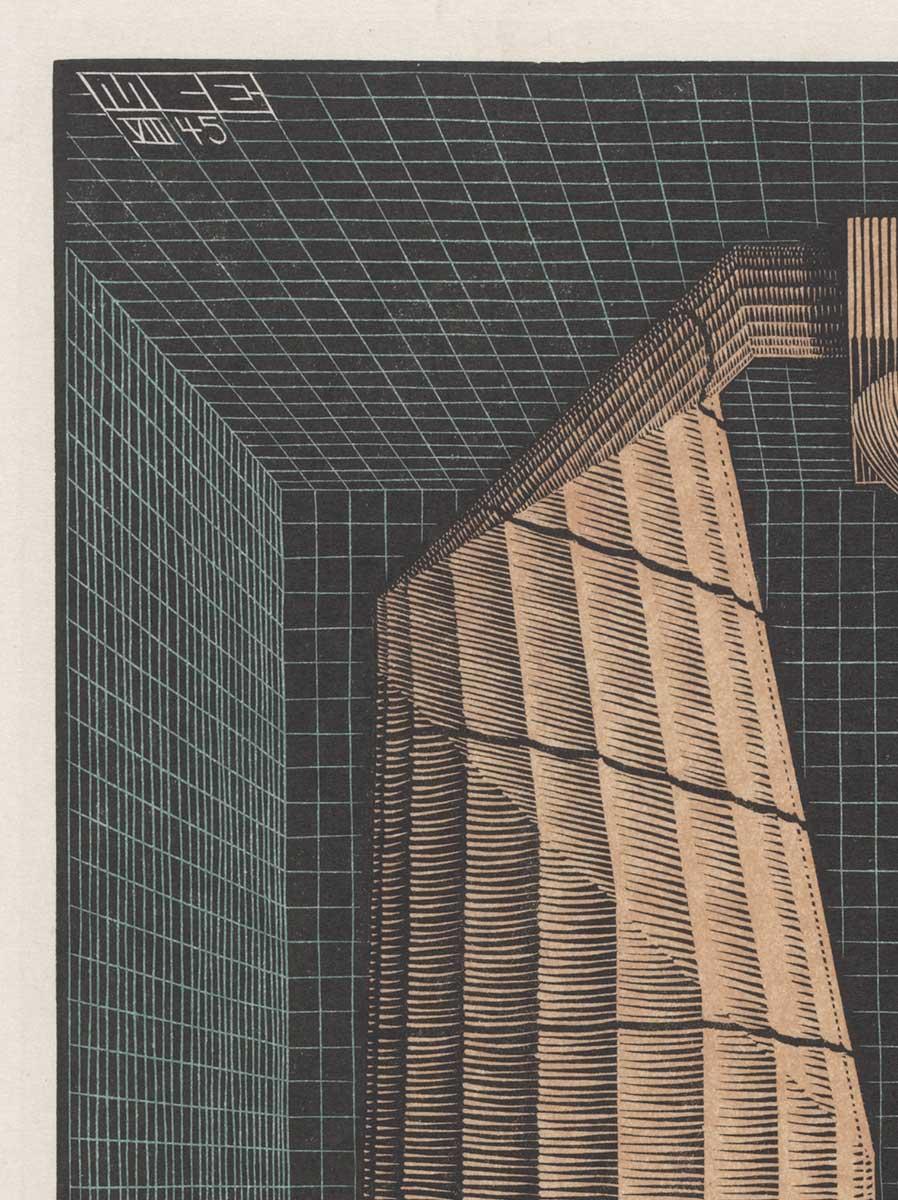
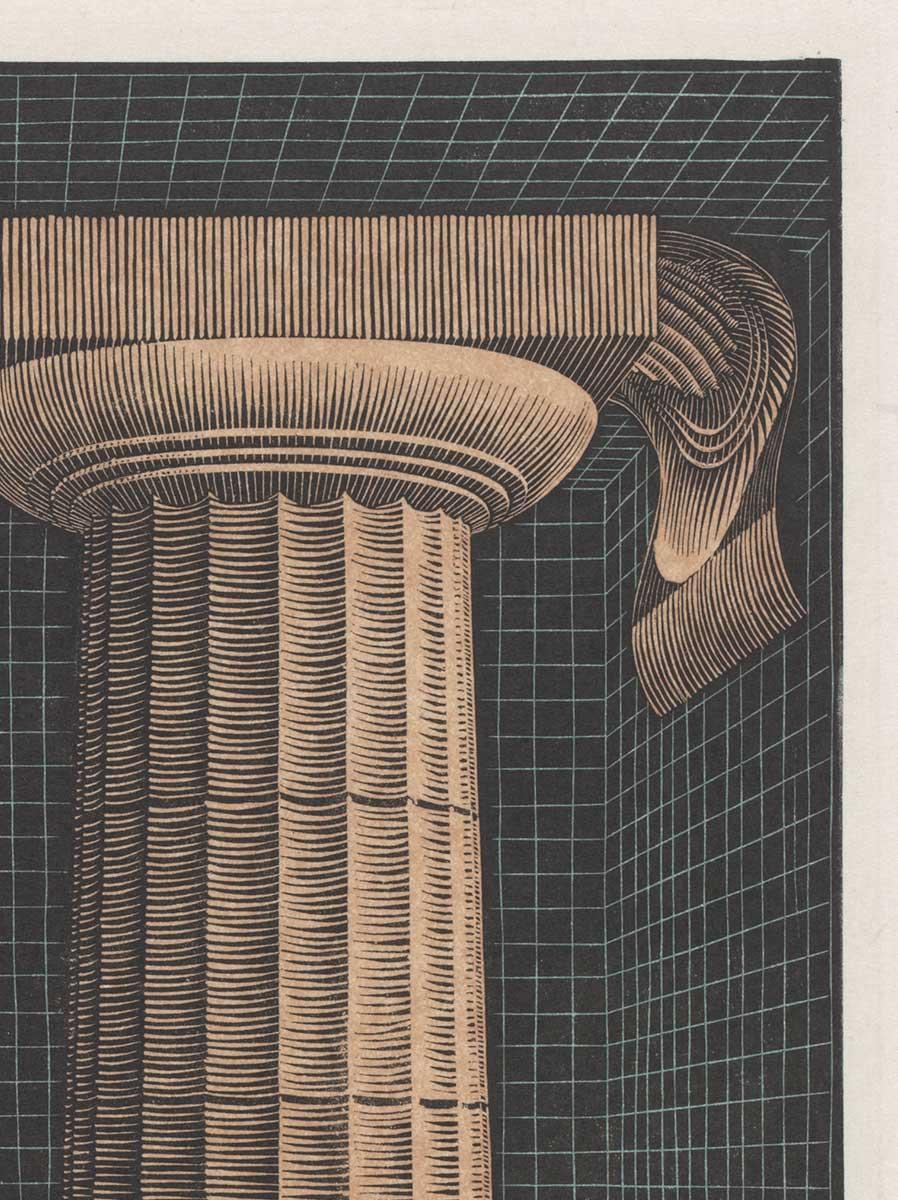
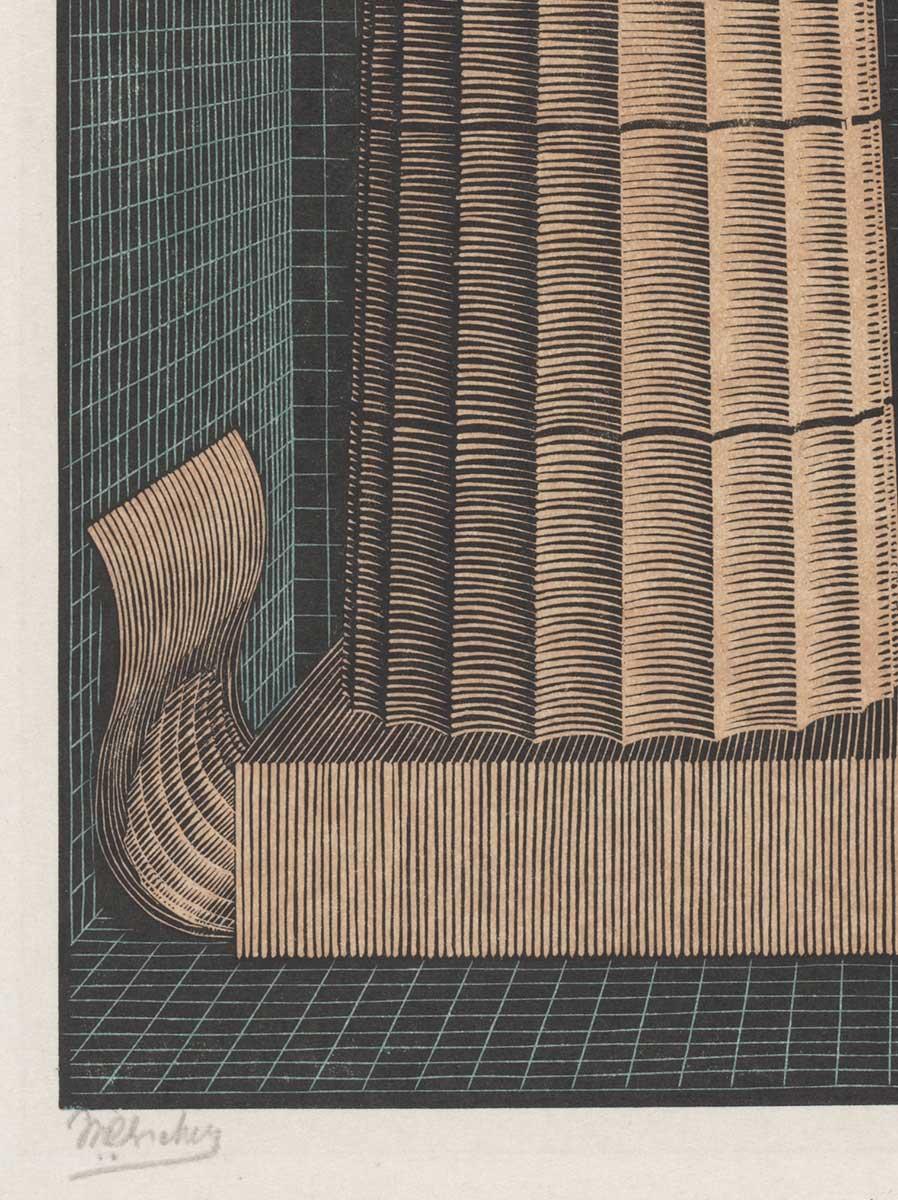
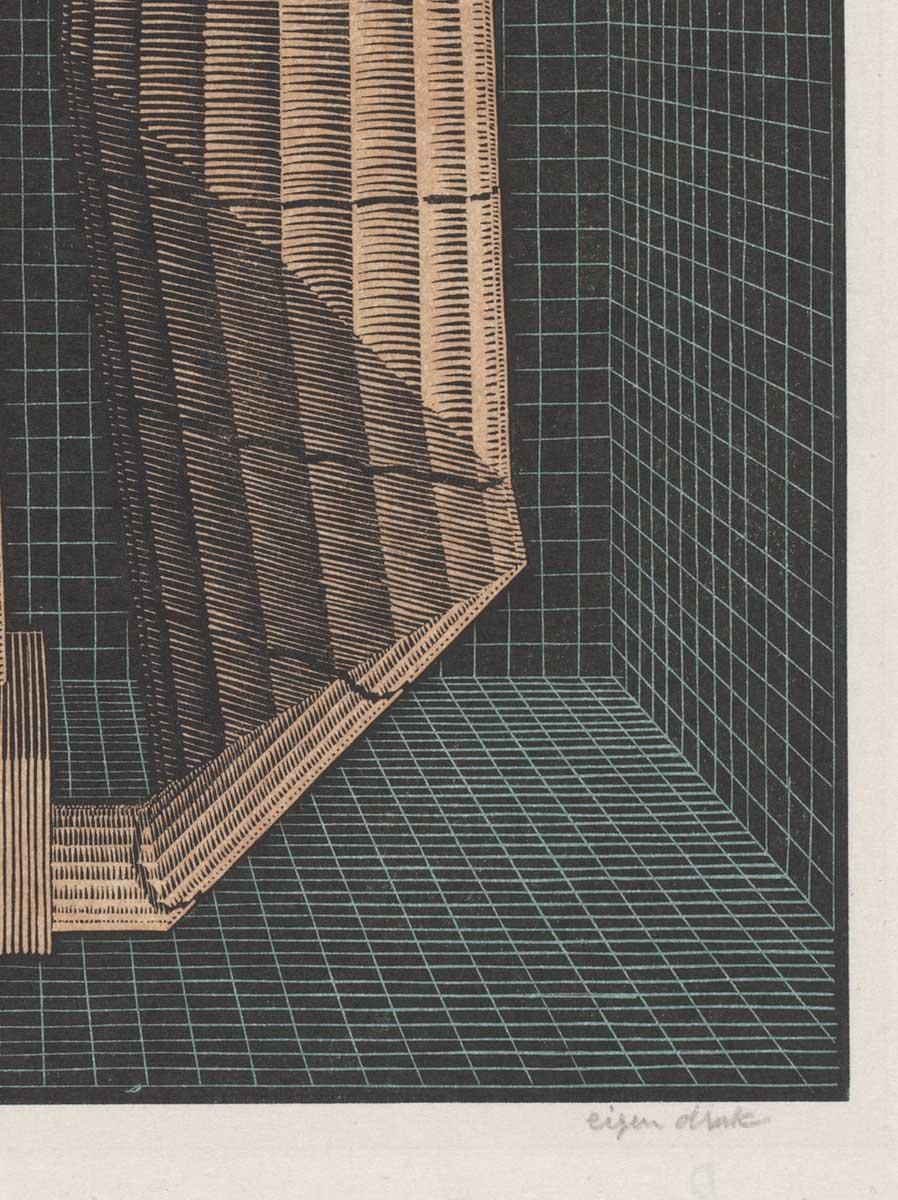
More Escher today

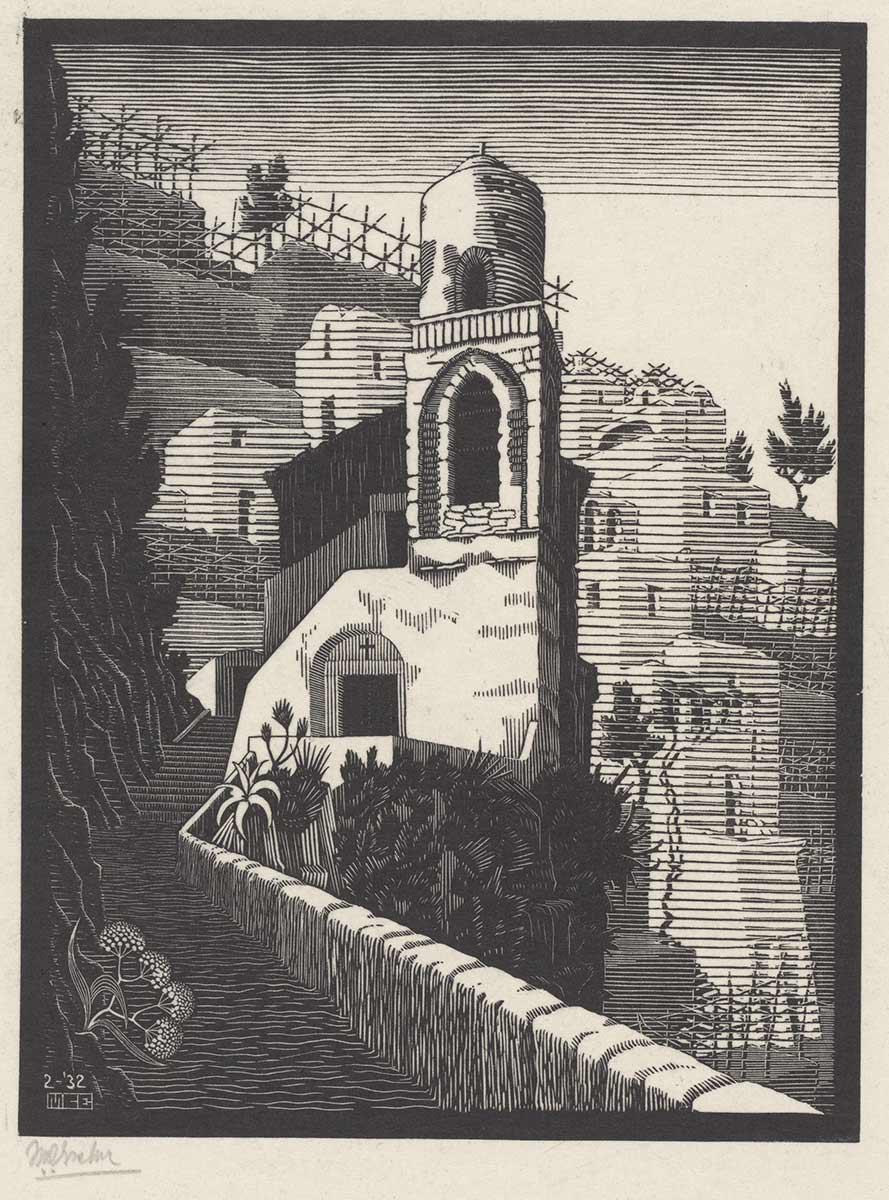
San Giovanni, Ravello
